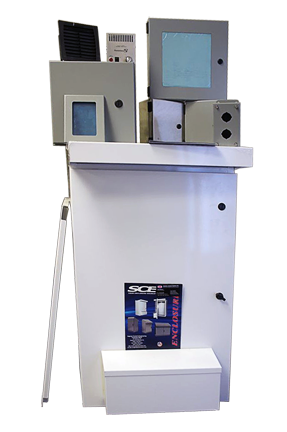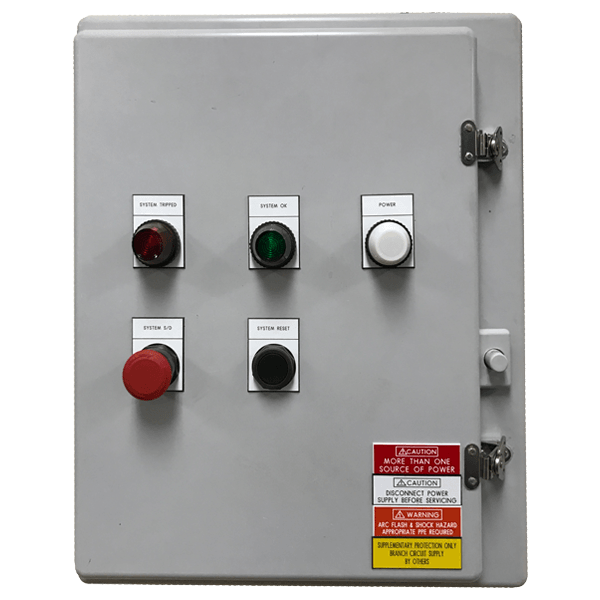Unlike PLC panels, every other electrical enclosure needs to ensure innate safety while installation. Three elements ignite the explosion in a perilous zone: Fuel, Oxidizer, and Energy. These are generally found in the industrial areas and buildings due to its heavy use during production procedures.
Perilous Zones
The hazardous areas are prone to combustion due to inflammable gases, dust, and vapors present in the environment.These can easily catch ignition by an open flare or matchbox that is fatal and trigger substantial destruction to property and material. They are more frequently to take place in the following places:
- Chemical Plants
- Aircraft hanger
- Paint Stores
- Processing Plants
- Mills
- Tanks
- Cleaning facilities
- Heaping facilities for combustible gases, liquids, and solids
Also Read: Know The Differences Between the Explosion And Flameproof Enclosures
What Are Hazardous Zones?
Hazardous zones are areas where flammable gases, vapors, dust, or fibers may be present in quantities that could ignite and cause explosions or fires. These zones are classified based on the frequency and duration of the hazardous presence, such as Zone 0, 1, or 2 for gases, and Zone 20, 21, or 22 for dust. The equipment used here must meet strict safety standards.
What Causes Explosions in Hazardous Areas?
Explosions in hazardous areas occur when three elements combine: a flammable substance (gas, vapor, or dust), oxygen (air), and an ignition source (spark, heat, or flame). This is known as the explosion triangle. Common causes include electrical sparks, hot surfaces, static discharge, or mechanical friction. Proper equipment design and strict safety measures help prevent such incidents in hazardous environments.
Common Locations of Hazardous Zones
Common locations of hazardous zones include oil refineries, chemical plants, fuel storage facilities, grain silos, wastewater treatment plants, and mining operations. These areas often handle flammable gases, vapors, or combustible dust, making them prone to explosive atmospheres. Hazardous zones can also be found in paint shops, pharmaceutical facilities, and food processing plants where fine powders or solvents are used.
Categorization of Zones
Every hazardous area having plc automation and enclosures is sub-categorized into zones and divisions, which we study further.
Zones Exposed to Inflammable Fumes:
- Zone 0- This zone having pipelines and tanks is prone to excessive and continuous exposure to volatile gas and vapor in the environment.
- Zone 1- This zone falls in discharging and loading facilities having sporadic explosions at irregular intervals fuming the atmosphere.
- Zone 2-Storage Spaces around the tanks and pipes fall under this zone. These are susceptible to less dangerous due to negligible explosions.
Zones Exposed to Lgnitable dust:
- Zone 20-In such zones, one can experience continuous explosions at frequent intervals that mix in the air making it combustible.
- Zone 21- This zone has combustible dust in the air which leads to intermittent explosions.
Zones Exposed to Combustible Fibres:
Combustible fibers are one of those substances that might not be found in the air mixture but can cause substantial damage. These can be enumerated as Cotton fluff, flax, or rayon that forms a cloud near or throughout the facility causing a flash spark. These zone out near textile industries and mills.
We have often seen breathtaking explosions on the big screen and awed the experience while watching it, but these do take place in reality causing harm to PLC panels throttling and worsening PLC automation and enclosures. Hence, it is important to understand the concept behind every kind of combustion and the zone where you are laying your facility.
Also Read- The Functionality And Benefits Of PLC Control System And Panel
Why Understanding Hazardous Zones is Important
Understanding hazardous zones is crucial for ensuring safety, preventing explosions, and complying with industry regulations. It helps identify risks and select appropriate equipment designed for explosive atmospheres. Proper classification and awareness protect workers, reduce downtime, and minimize costly accidents. Clear knowledge of hazardous zones supports safe design, installation, and maintenance practices in high-risk industrial environments.
How to Improve Safety in Hazardous Zones?
To improve safety in hazardous zones, use certified explosion-proof or intrinsically safe equipment, implement regular inspections, and follow proper maintenance procedures. Train employees on hazard awareness and emergency response. Ensure proper ventilation to reduce flammable concentrations and control static discharge. Accurate zone classification and compliance with safety standards like IECEx or ATEX are key to minimizing risks and protecting personnel and assets.
Conclusion
Hazardous zones pose serious risks, but with proper understanding, equipment, and safety protocols, these risks can be effectively managed. Identifying hazardous areas, complying with safety standards, and training personnel are essential steps in preventing accidents. By prioritizing safety and investing in the right solutions, businesses can protect their workforce, ensure operational continuity, and maintain a safe, compliant industrial environment.


